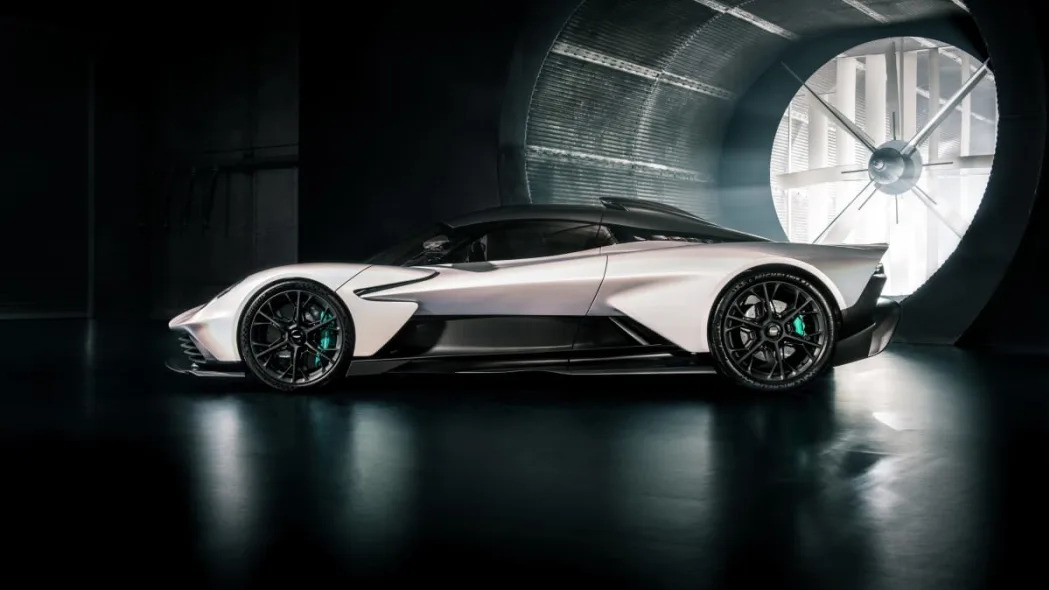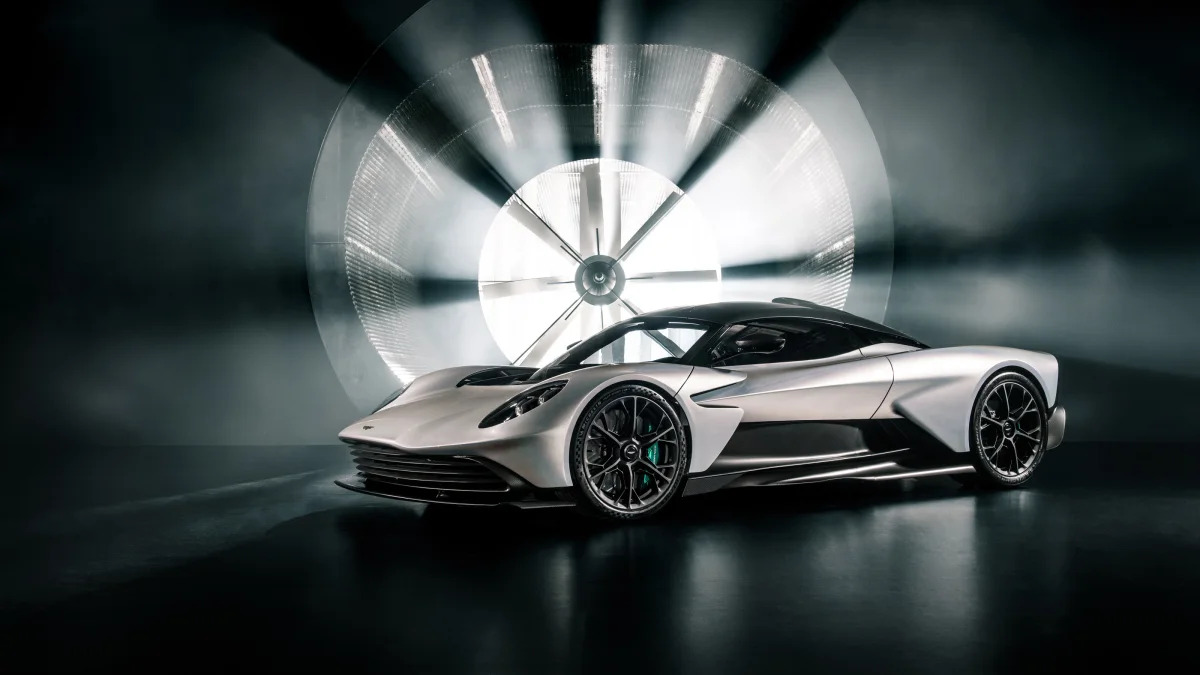Aston Martin has pulled the sheet just a bit further off of the 2024 Valhalla — its forthcoming hybrid hypercar — with a little help from its Formula 1 program. Granted, Aston would probably prefer to be in first place in the current Constructors' Championship (currently: 4th) but any excuse to talk about a new high-performance machine is a good excuse in our book, so we're not about to protest.
But believe it or not, we've got some honest-to-goodness real news to cover first: Aston Martin has previously suggested that the Valhalla's V8-based and thrice-electrically-assisted hybrid system would produce somewhere in the neighborhood of 940 horsepower; that number is now 998 (1,012 PS). This is the most significant change to be announced since Aston Martin confirmed that the Valhalla would be powered by a Mercedes-AMG V8, rather than an in-house six-cylinder that would have been the company's first ground-up engine design since the 5.3-liter V8 Aston Martin debuted in 1969.
Instead, we get a modified Black Series V8 — a twin-turbocharged, 4.0-liter flat-plane-crank V8 makes 740 horsepower without any electric assist. The Valhalla's electric motors contribute the rest; two of them sit up front to bestow the Valhalla with torque-vectoring all-wheel drive; the third is integrated into the transmission and its power combines with the V8's, going directly to the rear wheels. The new figures have no impact on the Valhalla's performance figures; Aston is standing by its original 0-62 projection of 2.5 seconds and top speed of 217 mph. That the Valhalla's new official power output is just one shy of the total number of Valhallas the company plans to build is surely a coincidence ... right?



As for the F1 goodies? Well, they're found just about everywhere, and since the Valhalla doesn't have to conform to series regulations, the wind geeks at Aston were given free rein to extract everything they could from the Valhalla's active aerodynamics.
"Like the AMR23 race car, Valhalla features multi-element wings front and rear," Aston said. "The front wing can lie flat in a DRS position to reduce drag or can be angled up to generate huge downforce directly ahead of the front wheels. Behind the front splitter the under-floor surface is concave, creating a low-pressure area that generates downforce."
The rear wing normally lies flush with the body (mostly for aesthetics; somewhat for efficiency) but raises from the body in track mode. From there, the active elements are managed on-the-fly by the Valhalla's onboard software. The slotted louvers on the Valhalla's sills pull air away from the lower body, increasing downforce; the roof-mounted snorkel feeds the engine intake and the Valhalla's two intercoolers.
Aston Martin also cites other crucial items, from lessons learned in cockpit ergonomics to the materials research that goes into the raw components of F1 cars, but really what we're looking at is a gentle — and impressive — reminder that Valhalla development remains underway. Only 998 more to go after this one!
Related video:











Sign in to post
Please sign in to leave a comment.
Continue